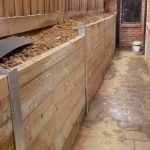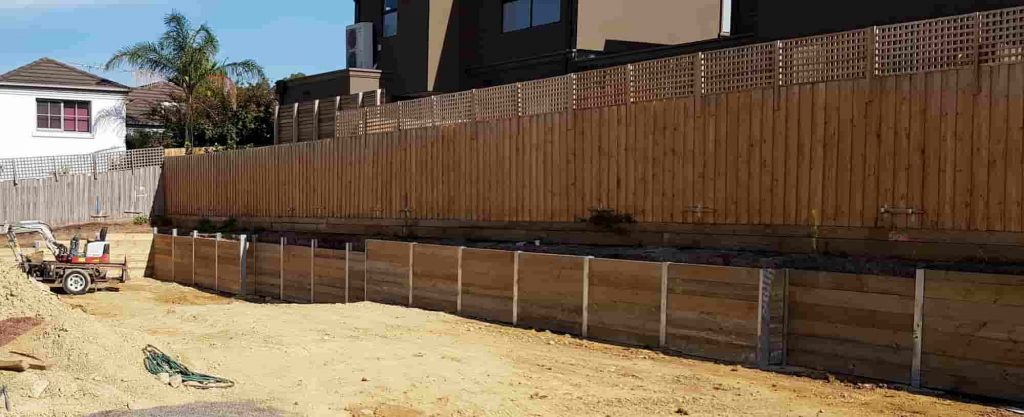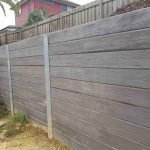Introduction
When it comes to boosting your landscape, a sturdy and aesthetically pleasing keeping wall can make all the difference. Whether you're seeking to prevent soil disintegration, create a flat space in a sloping location, or just add visual appeal to your residential or commercial property, employing the ideal retaining wall contractor is crucial. This guide will walk you through whatever you need to understand about finding, examining, and employing an expert retaining wall installer.
What Is a Retaining Wall Contractor?
A retaining wall contractor concentrates on the style and construction of maintaining walls. These specialists comprehend various products-- like concrete sleepers, H beams, wood sleepers, wood sleepers, and stone-- and how to successfully utilize them for developing long lasting structures that serve both practical and aesthetic purposes.
Why You Required a Retaining Wall Contractor
Expertise: An experienced contractor brings important understanding about soil types, drain options, and design principles that make sure the wall's longevity.
Quality Materials: They have access to high-quality products that might not be readily available to the average homeowner.
Regulations: Specialist professionals are fluent in regional building codes and zoning laws.
The Benefits of Employing an Expert Retaining Wall Builder
Hiring a professional retaining wall builder has a number of benefits:
- Safety: Constructing walls requires an understanding of structural integrity; experts minimize risks. Time-Efficient: Specialists can complete tasks quicker due to their experience and expertise. Warranty Options: Many contractors use warranties on their work, providing comfort for homeowners.
Types of Retaining Walls
Understanding the various kinds of keeping walls can help you decide what finest fits your requirements:
1. Concrete Sleeper Walls
Concrete sleeper walls are prefabricated concrete panels that offer exceptional durability and strength.
2. H Beam Walls
H beam walls use steel beams for added support and are ideal for larger structures.
3. Wood Sleeper Walls
These are more aesthetically pleasing but may need more upkeep in time compared to concrete options.
4. Timber Sleeper Walls
Timber provides a natural look however is vulnerable to rot if not dealt with properly.
5. Stone Walls
Stone is typically used for its beauty but requires knowledgeable labor for installation.
How to Choose the Right Retaining Wall Installer
Choosing the ideal retaining wall installer includes numerous steps:
1. Research Contractors in Your Area
Start by searching online or asking next-door neighbors for recommendations. Look for reviews on platforms like Yelp or Google My Business.
2. Assess Their Experience
It's important to ask potential contractors about their experience particularly with maintaining walls.
3. Inspect Licensing and Insurance
Always validate that the contractor is accredited and guaranteed; this secures you in case of mishaps during construction.
4. Request References
A reputable professional must be able to provide references from previous customers who had similar tasks completed.
Questions You Need to Ask Before Hiring
Before making a decision, prepare questions that will provide you insights into their competence:
What is your experience with constructing maintaining walls? Can I see examples of your previous work? How do you handle drainage issues? What products do you suggest based upon my job needs? How long will my task take from start to finish? Do you supply service warranties or warranties on your work?Understanding Expenses Involved in Building Retaining Walls
The cost of building a maintaining wall can differ considerably based on numerous aspects:
- Material type (e.g., concrete vs wood) Wall height Site accessibility Labor rates
Here's an approximated breakdown of expenses by material type:
|Product Type|Expense https://postheaven.net/camerconjj/preparing-your-property-for-winter-season-tips-from-professional-installers per Square Foot|| --------------------|----------------------|| Concrete Sleeper|$30 - $50|| H Beam|$25 - $45|| Wood Sleeper|$15 - $30|| Timber Sleeper|$20 - $35|| Stone|$50 - $100|
The Vital Guide to Hiring a Retaining Wall Contractor: The Preparation Phase
Proper preparation can conserve you time and money down the line when working with your chosen professional:
1. Evaluate Your Needs
Consider why you need a maintaining wall-- whether it's disintegration control, creating usable land, or aesthetic enhancement.
2. Measure Your Space
Accurate measurements make sure that the design meets your requirements while adhering to regional regulations.
3. Set a Budget
Understanding what you want to spend helps narrow down alternatives when going over products and designs with contractors.
Design Considerations When Employing a Retaining Wall Contractor
Design isn't just about looks; it should likewise serve useful functions:
1) Height
How high do you require the wall? Taller walls might require additional engineering considerations.
2) Drainage
Water management is important; incorrect drainage options can lead to structural failure over time.
3) Visual Appeal
Consider integrating landscaping aspects such as plants or decorative stones into the design for visual appeal.
Legal Considerations When Constructing a Keeping Wall
Many locations have particular guidelines relating to construction jobs:
1) Regional Zoning Laws: Check if licenses are needed before starting construction.

2) Home Lines: Guarantee that your brand-new structure does not trespass on neighboring properties.
3) Environmental Laws: Some regions have guidelines concerning landscaping near water bodies or secured areas.
FAQs About Employing A Retaining Wall Contractor
Here are some common concerns people have about hiring a retaining wall contractor along with succinct responses:

1) For how long does it take to construct a maintaining wall?
The timeline varies based upon size and intricacy however typically ranges from one day for small walls up to a number of weeks for bigger installations needing heavy machinery or extensive site preparation.

2) Do I need authorizations for constructing a maintaining wall?
Most towns need authorizations for building taller than four feet; always check local policies before proceeding with construction.
3) Can I develop my own retaining wall?
While DIY jobs are possible, it's a good idea only if you're experienced in landscaping; hiring experts warranties proper installation techniques are followed.
4) What products last longest?
Concrete sleeper walls typically last longer than wood options due to their resistance versus decay; nevertheless, stone offers both resilience and beauty if set up correctly.
5) How do I preserve my new keeping wall?
Regular assessments will help recognize any concerns early on; cleansing debris accumulation makes sure reliable drainage while monitoring fractures keeps them from worsening over time.
6) Will my garden suffer throughout construction?
Most credible specialists take precautions not only throughout installation but also afterward by restoring impacted landscaping functions post-construction completion!
Conclusion
Finding the best retaining wall contractor does not need to be an overwhelming process if you're equipped with knowledge about what they do and how they operate! The Essential Guide to Hiring a Retaining Wall Contractor has actually provided insights into numerous elements-- from understanding kinds of walls offered through assessing costs included-- all targeted at assisting homeowners make notified decisions when purchasing these critical outside structures! Constantly remember-- when it comes down to protecting your home against soil erosion while likewise enhancing its visual appeal-- picking sensibly matters!